Return of the power dresser

Simply sign up to the Style myFT Digest -- delivered directly to your inbox.
Much of the advice in The Woman’s Dress for Success Book, John T Molloy’s 1977 directive, doesn’t stack up today. The author suggests women should wear skirt suits to be taken seriously in the boardroom, but says trousers look too masculine; he commends attaché cases and a squirt of expensive perfume but admonishes those who wear sweaters — they, after all, signal “lower-middle class” and “loser”. Yet for women entering the workplace at the time, Dress for Success became a bible for how to command respect in the office and navigate a male-dominated arena. It also set the tone for what we now know as power dressing, the aesthetic that melds the hard-shouldered codes of traditional menswear with an hourglass silhouette.
The AW23 collections have seen the high-powered, corporate glamazon return in all her assertive glory. This was no more apparent than at Saint Laurent, where creative director Anthony Vaccarello sent a cast of women down the runway in suit jackets so angular they could nearly prove Pythagoras’s theorem. The matching skirts were cinched with belts and slit up the front to really lean into the ’80s feeling, especially when worn with sheer black tights and boardroom pumps.
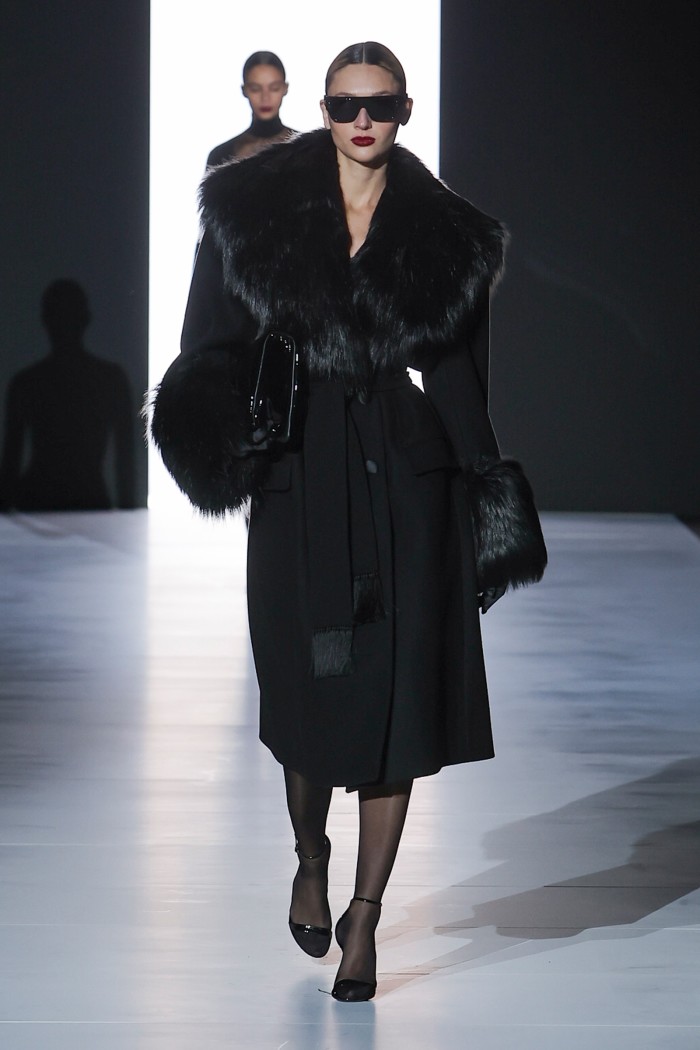

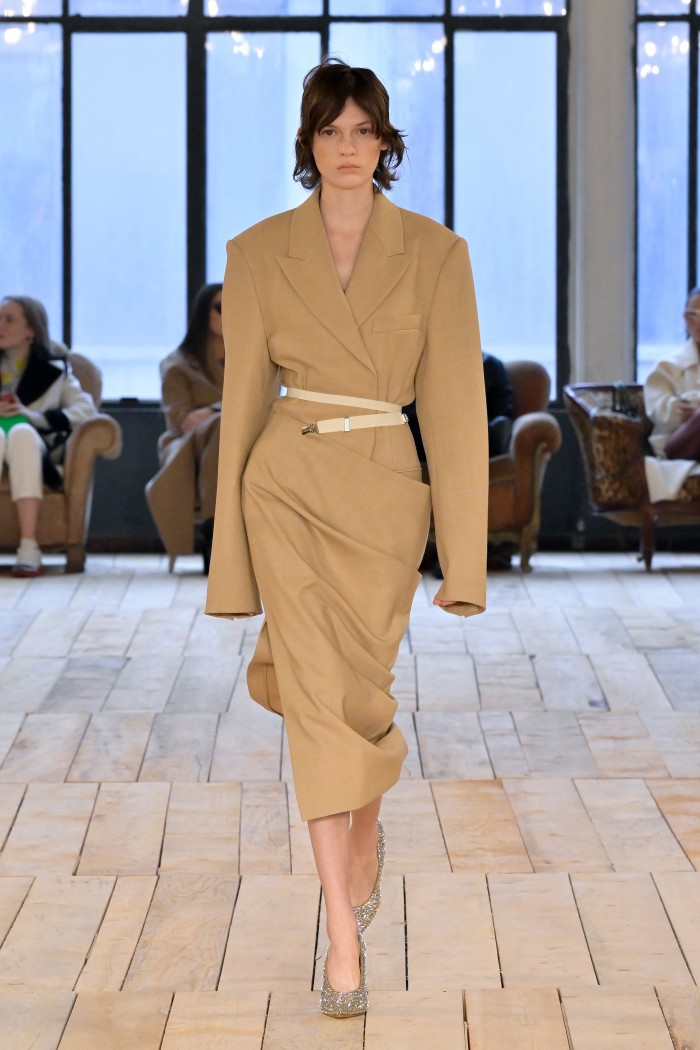

At Tod’s, departing creative director Walter Chiapponi fashioned shiftdresses with shoulder pads inspired by “the Italian tradition of men’s tailoring, which was shown not only on the jackets but also on structured shirts”. New York-based Jonathan Simkhai put a modern twist on the power skirt suit, with an oversized, peak-lapel jacket that was cropped to show a flash of skin, paired with a wrap-fronted miniskirt in matching sober grey. He designed it for the woman who is “back in the city after the summer and ready to get into her routine — for work meetings and then into a night out”. At Louis Vuitton and Proenza Schouler, the hourglass silhouette was achieved with tied belts, while at Versace, it was channelled via a vampy nipped-in coat.
“Much of my research happens in our historic archive, where there is a huge amount of work by Anne-Marie Beretta, who designed for the company in the ’80s,” says MaxMara creative director Ian Griffiths of the stimulus behind this season’s looks. “She was the first to play with those iconic features: big shoulders and small waists, cascade collars, asymmetric necklines and bustiers.” MaxMara’s collection for AW23 included double-breasted suits and corsetry, as did the brand’s diffusion line Sportmax, which had padded jackets that cinched dramatically at the waist.
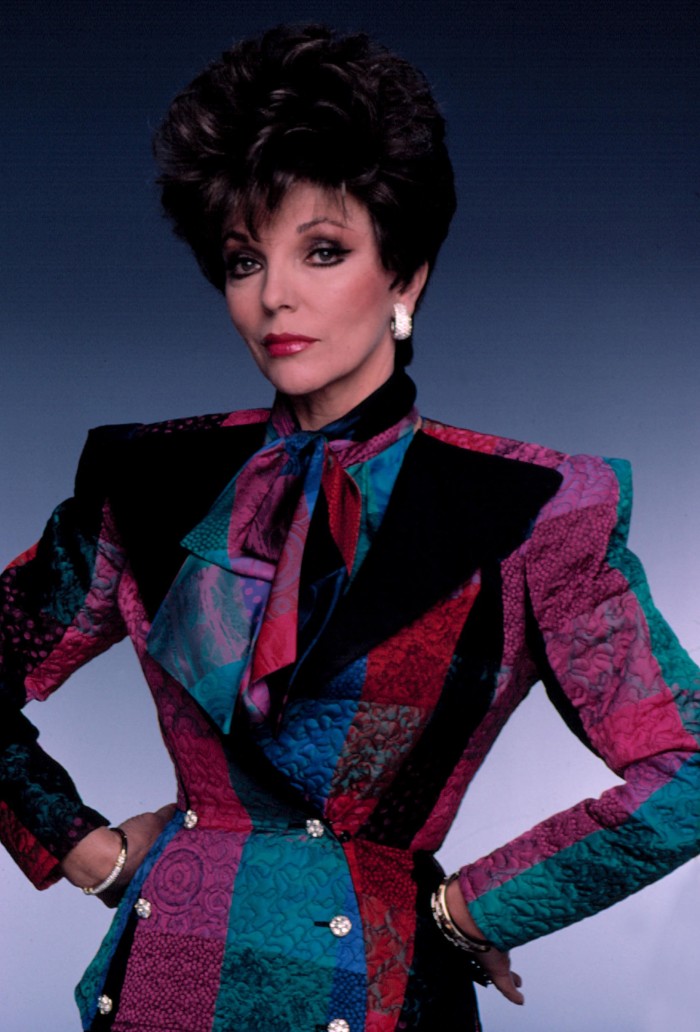
While established in the ’70s, power dressing hit its stride in the ’80s as women increasingly forged their way into power in both business and politics. The glamazon became an ideal of feminine corporate empowerment: consider Grace Jones’ razor-sharp black jacket on the cover of Nightclubbing (1981); Signourney Weaver in Working Girl, with big hair and even bigger shoulders; Oprah Winfrey’s statement fur coats; and the cast of ’80s soaps.
A host of designers fuelled this — first Giorgio Armani and Ralph Lauren, who gave an insouciant feel to the suit, followed by Donna Karan, Thierry Mugler, Bob Mackie and Calvin Klein, then Bill Blass and Geoffrey Beene. None, however, epitomised power dressing quite like Nolan Miller, the late costume designer for Dynasty, who made many of the show’s ensembles and commanded a frenzy of customers at Bloomingdale’s, which sold his fashion collection themed to the show.
Miller mixed the assertiveness of power dressing with an uncompromising glamour that underscored the characters’ Machiavellian motives. The scheming Alexis Carrington Colby, played by Joan Collins, wore chalk-stripe skirt suits with pussybows, silk blouses with larger-than-life lapels, and shoulder pads sharp enough to match her tongue; she sparred with the show’s other characters and plotted to destroy her ex-husband while looking like a million bucks.
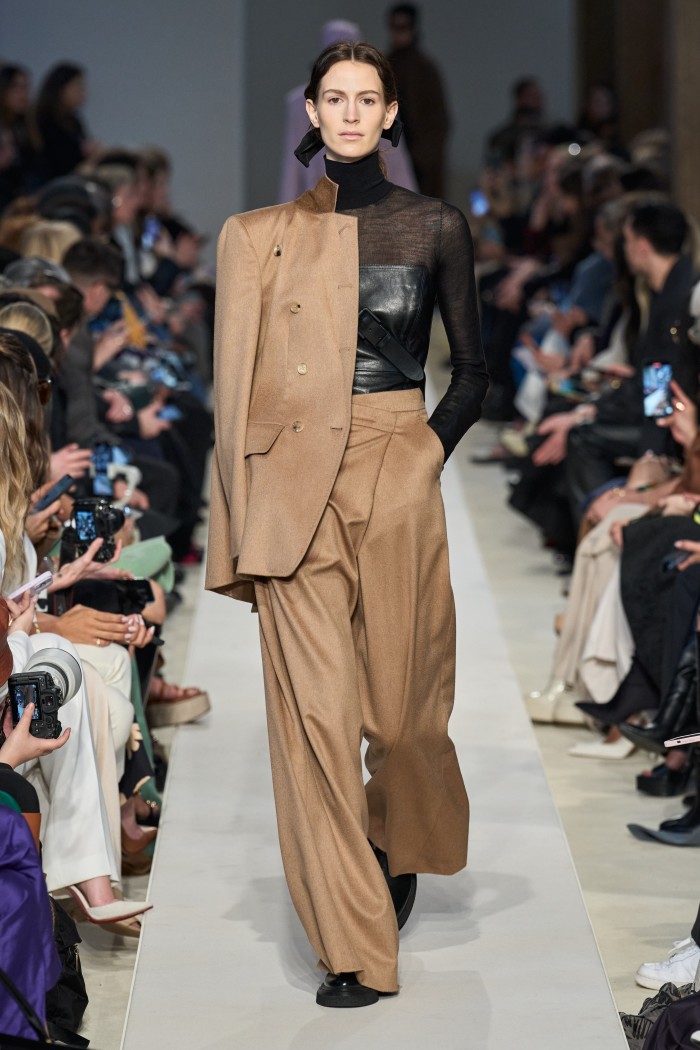
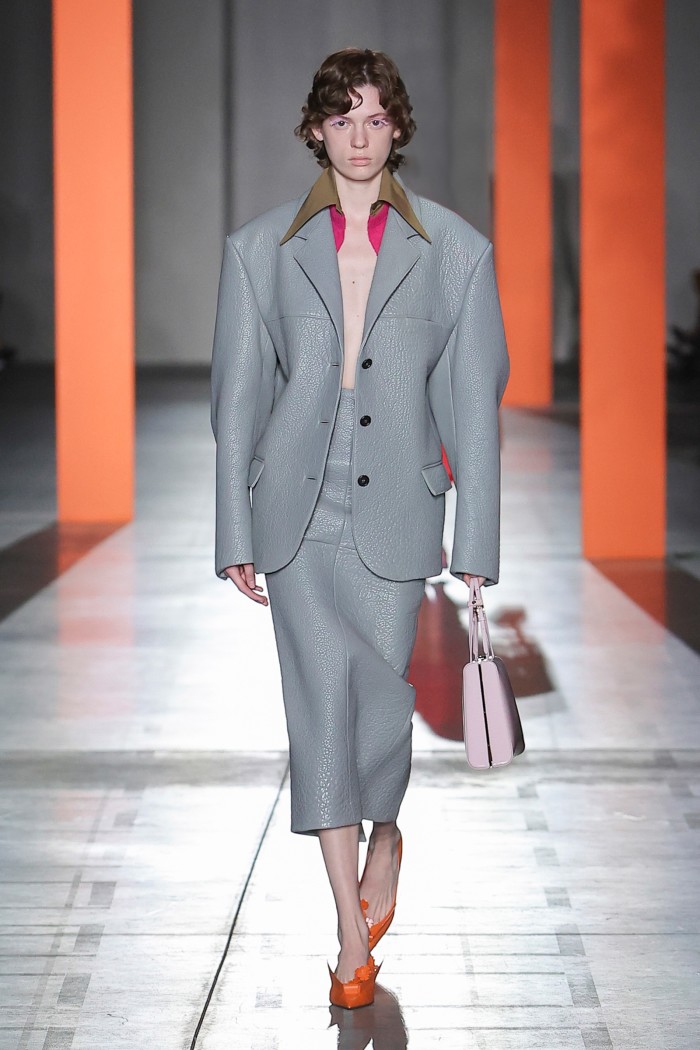
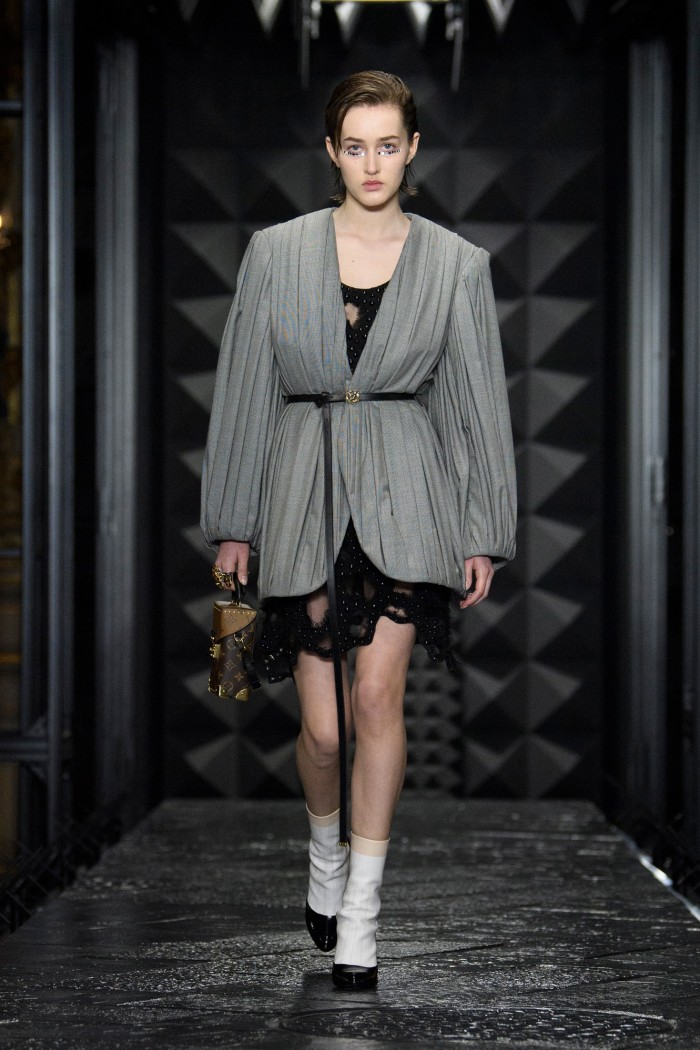
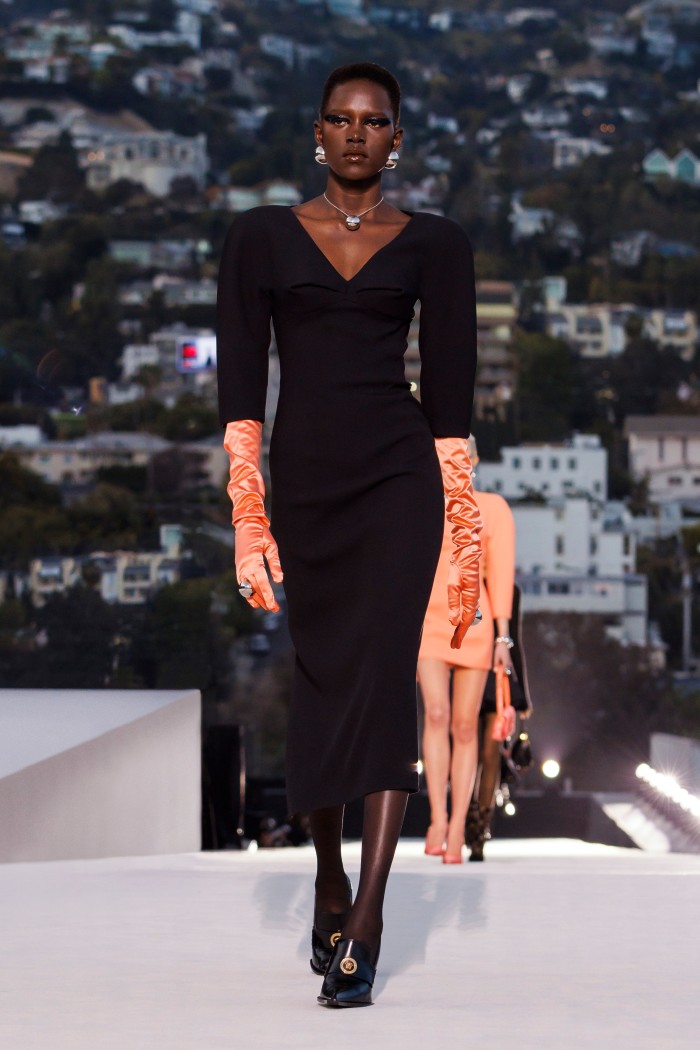
The show also mirrored the economic prosperity that came to define the ’80s. “The term ‘more is more’ has never suited an era more than the ’80s — excess and exaggeration were key,” says vintage jewellery dealer Susan Caplan. “Pearls and chains all played a part — and the gaudier, the better.”
Caplan namechecks Christian Lacroix, Yves Saint Laurent, Chanel and Thierry Mugler as leaders of the excessive accessories of the ’80s — which have followed power dressing back into vogue today. “Gold chains and oversized hoop earrings are timeless in their appeal, or for some added drama, wear oversized heavy cuffs, as seen on Saint Laurent’s AW23 runway.”
But what other elements of power dressing might be relevant now? Certainly, the full ’80s look — the fur coats, colour-matched, wide-brim hats and beading so adored by Collins’ character — would seem anachronistic to today’s tastes, and the economy isn’t in a state to reflect such displays of wealth. Many of the designs on the catwalks offer a more subdued take on the idea, with slightly exaggerated shoulders and a belted waist.
“While power dressing might look similar now to how it did in the 1980s in some arenas, it is a much broader and more nuanced spectrum today,” says Arin Burke, a costume designer for the 2017 remake of Dynasty. “For some, power dressing means logomania: to others, it’s esoteric, fashion insider pieces like Maison Margiela’s Tabi boot.” For Burke, it translates to a unique sense of style “rich with personality. It means having clothes that fit properly and that are clean and pressed. It means choosing shoes and accessories that are interesting and practical.”
And trends aside, it’s the messaging that still holds relevance today. “We are psychologically hard-wired to believe that people who present themselves with confidence are in fact capable, and that if we dress ourselves confidently, we will be perceived as such,” adds Burke. Power dressing as the ultimate power play? Whatever it takes to get ahead.
Model, Marilou Hanriot at Ford Models. Casting, Chouaïb Arif. Hair, Sachi Yamashita. Make-up, Hicham Ababsa. Manicure, Philippe Ovak at MFT Agency. Photographer’s assistant, Antoine Pereira. Stylist’s assistant, Yuliia Mchedlishvili
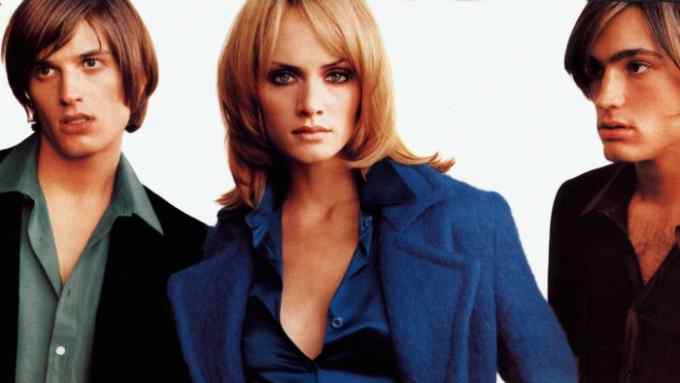
Comments